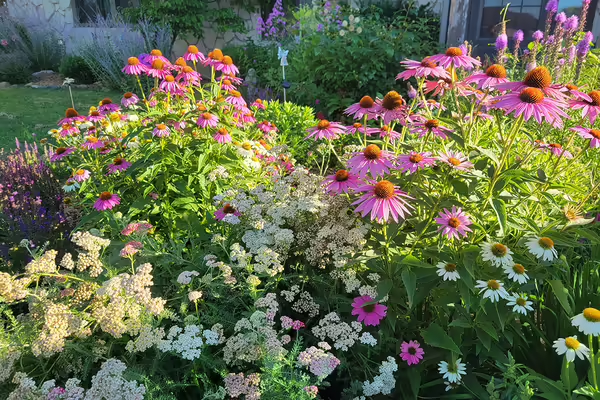
URBANA, Ill. — Pruning perennial flowers takes a garden from looking fair to well-kept. Deadheading, cutting back, and pinching are all pruning techniques that can keep perennial plants looking well cared for and healthy.
Pruning perennials is a complex topic because different plants need different kinds of pruning. Experience, developed with practice and close observation of the plants, helps to determine when and what type of pruning is required. Luckily, perennial plants are forgiving, so experimenting usually won't cause permanent damage. Leggy plants, ragged leaves, or new growth at the base of the plant are signs that the plant is ready for pruning.
Deadheading
Many perennials bloom for three weeks or less. Deadheading is one way to encourage a longer bloom time in certain species. After flowering, the plant puts a lot of energy into making seeds to complete its life cycle. Deadheading or removing the flowers after bloom forces the plant to put more into making new flowers. Deadheading techniques depend on the species. Due to different growth habits, some plants require deadheading to the next flower, bud, or leaf, while others need to remove the flower stalk. Well-known perennials that should be deadheaded to the next lateral flower, bud, or leaf to encourage a longer time for blooms include:
- Butterfly weed (Asclepias tuberosa)
- Coreopsis
- Purple coneflower (Echinacea purpurea)
- Scarlet bee balm (Monarda didyma)
- Garden phlox (Phlox paniculata)
- Culver's root (Veronicastrum virginicum)
Cutting back
Cutting back is a second pruning option for perennials. Increasing plant vigor, delaying bloom time, and controlling height are some reasons for choosing to cut back plants. Cutting back when foliage looks ragged, and new growth at the plant’s base is starting can rejuvenate the appearance. The renewed growth also helps keep the plant healthy. Removing older, worn foliage with healthy new foliage reduces stress and can increase the plant's life expectancy.
Cutting the plant back can also delay bloom time or manage plant height. With some plants, cutting back can encourage a second bloom. It is best to cut the whole plant back at one time. With continuous flowering, a perennial can use all its energy for flowers in a season with nothing left to make flower buds the next season.
Some species can tolerate cutting back better than others. It is essential to pay close attention to the signs that cutting back would be beneficial. Cutting back more than half of the foliage can put the plant under some stress, so be sure to give the plant some extra attention until new growth begins. Perennials benefitting from cutting back early in the summer include:
- Sedum (Hylotelephium spectabile)
- Asters
- Cardinal flower (Lobelia cardinalis)
- Golden rod (Solidagos)
Pinching
A third option for pruning perennials is the pinching method. Pinching can cause a plant to produce more but smaller flowers by removing the central flower bud. On the other hand, pinching away side buds can force the plant to put more energy into one large flower. Perennials that can be pinched back to benefit the plant include:
- Asters
- Yarrow (Achillea millefolium)
- Chrysanthemums (Chrysanthemum x morifolium)
- Rudbeckia
- Goldenrods (Solidago hybrids)
Another benefit of pinching specific stems is increased air circulation through the plant. Increased air circulation helps to reduce the likelihood of infection by disease. Removing disease or injured stems by pinching helps keep plants healthy.
Try some of these pruning techniques to keep your perennials looking great all season long. For more information on perennials and pruning, connect with your local Extension office at go.illinois.edu/ExtensionOffice.
WRITER: Nicole Flowers-Kimmerle is an Illinois Extension horticulture educator for Fulton, Mason, Peoria, and Tazewell counties. Gardeners Corner is a quarterly newsletter from gardening experts around the state. Each issue highlights best practices that will make your houseplants, landscape, or garden shine in any season. Join the Gardener’s Corner email list at go.illinois.edu/GCsubscribe for direct access to timely tips.
PHOTO ACCESS: The photo in this article is available to download for media use. Photo by Nicole Flowers-Kimmerle.
Illinois Extension leads public outreach for University of Illinois by translating research into action plans that allow Illinois families, businesses, and community leaders to solve problems, make informed decisions, and adapt to changes and opportunities. Illinois Extension is part of the University of Illinois Urbana-Champaign College of Agricultural, Consumer and Environmental Sciences.